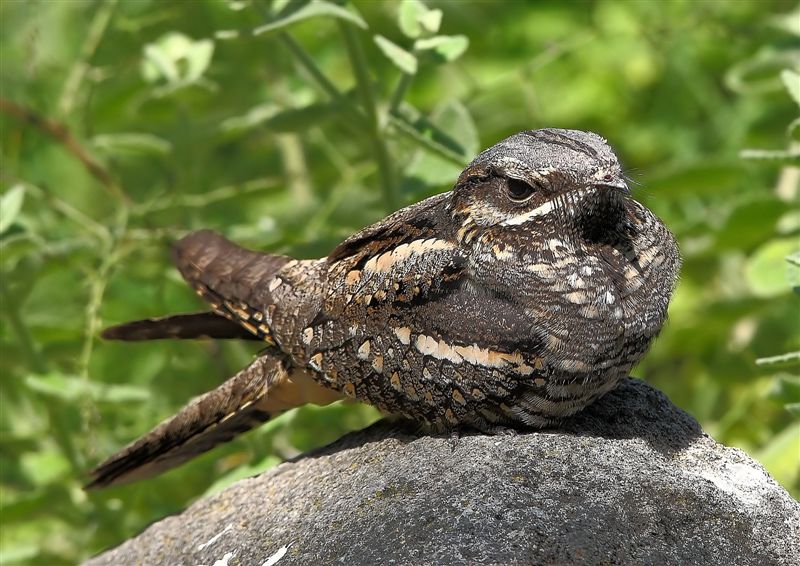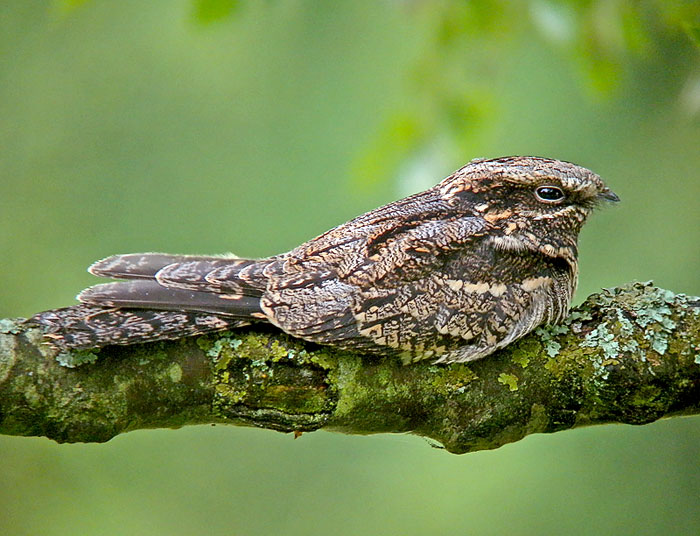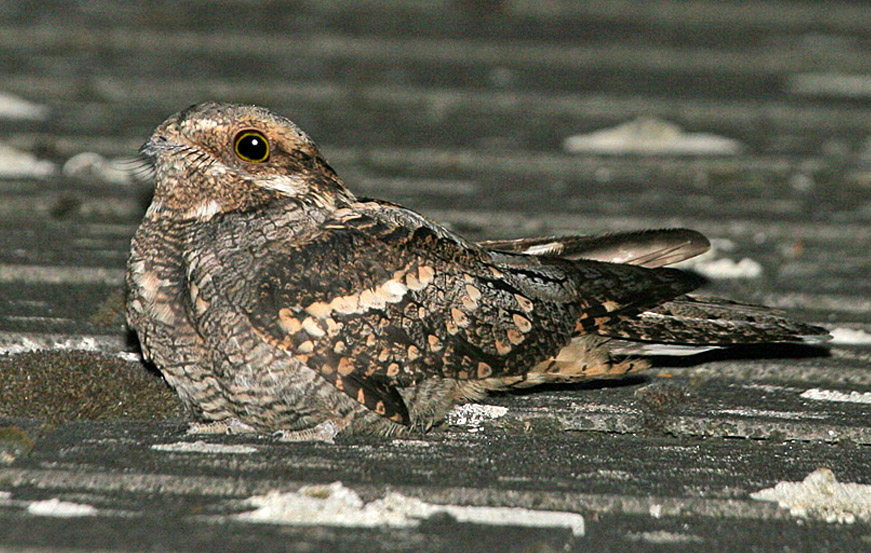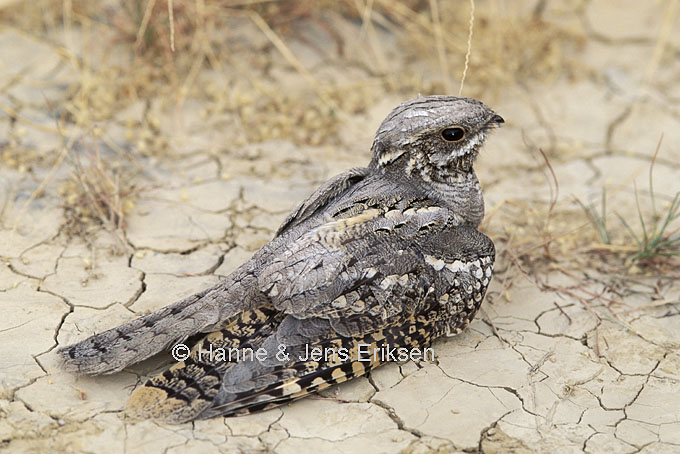
Caprimulgus europaeus
SUBFAMILY
Caprimulginae
TAXONOMY
Caprimulgus europaeus Linnaeus, 1758, Sweden. Six subspecies.
OTHER COMMON NAMES
English: Common goatsucker; French: Engoulevent d’Europe;
German: Ziegenmelker; Spanish: Chotacabras Europeo.
PHYSICAL CHARACTERISTICS
10–11 in (25–28 cm); 1.2–3.6 oz (35–101 g). Grayish brown,
blackish brown, buff, brown, and whitish cryptic coloration.
Sexually dimorphic.
DISTRIBUTION
Breeds across most of Europe and North Africa and east across
Asia to Outer Mongolia; all populations migrate to winter in
Africa south of Sahara.
HABITAT
Breeds in open woodland, heath, sand dunes, steppe, and semidesert;
winters in savannas and woodlands.
BEHAVIOR
Roosts during daytime; active from before dusk until dawn.
Prolonged churring song serves to advertise territory. Song is a
sustained tremolo, alternating between lower-pitched screeches
and slower, higher-pitched screeches, and ending in a quiet
bubbling trill, the whole often lasting five minutes.
FEEDING ECOLOGY AND DIET
Catches insect prey in sustained hawking flights or in short sallying
flights from perches.
REPRODUCTIVE BIOLOGY
Unlined nest on ground with clutch of two eggs. Eggs are pale
gray to cream with dark blotches and spots. Incubation mainly
by female for 17 days. Small young have cream-buff down.
Young tended by one or both parents; able to fly when about
17 days old.
CONSERVATION STATUS
Not globally threatened, but declining in some European
countries such as Ireland.
SIGNIFICANCE TO HUMANS
Infrequently noticed by local people, except for its churring
nocturnal song.
Other popular Animals
Photo Gallery of - European nightjar




 Animalia Life
Animalia Life